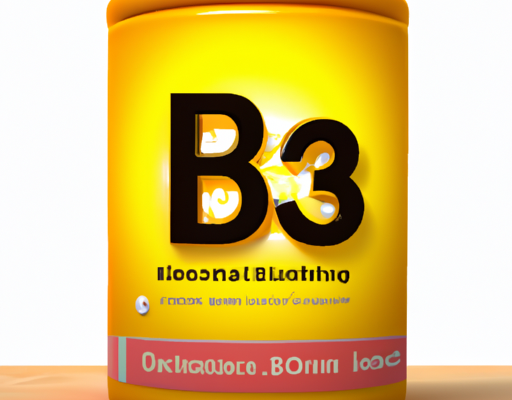Overview of Niacin Deficiency Disease
Niacin deficiency disease, also known as pellagra, is a medical condition that arises from a lack of niacin (vitamin B3) in the body. It is characterized by four main symptoms: diarrhea, dermatitis, dementia and death. Without proper treatment, this deficiency can lead to a wide range of health complications and can even be fatal. Fortunately, niacin deficiency can easily be treated with dietary changes or supplements. Increasing the amount of foods rich in niacin, such as whole grains, legumes, nuts, and seeds, can make a significant difference in the overall health of those affected by this condition. Additionally, supplementing with niacin can help to provide the necessary nutrients for treating and preventing deficiency. With proper medical attention and dietary changes, those affected by niacin deficiency can lead a healthy and normal life.
Signs and Symptoms of Dermatitis Caused by Niacin Deficiency Disease
Niacin deficiency disease, otherwise known as pellagra, is characterized by a wide range of symptoms, one of which is skin irritation in the form of dermatitis. This form of dermatitis is caused by an inadequate intake of niacin, a water-soluble vitamin found in certain foods, such as fish, dairy, nuts, and poultry. Symptoms of dermatitis caused by niacin deficiency disease include red rashes, often with a leathery texture and/or a burning sensation, usually on the hands, feet, and face. In more severe cases, the rash can cover large areas of the body and can be accompanied by loss of pigmentation or discoloration of the skin. In addition to the physical symptoms, niacin deficiency disease can cause other health issues, such as confusion and depression, as well as fatigue and digestive issues. Fortunately, treatment is often simple: a diet rich in niacin can help to replenish your body’s supply of this essential vitamin, while supplements may also be helpful in more severe cases.
Causes of Niacin Deficiency Disease
Niacin deficiency disease, also known as pellagra, is an illness caused by an inadequate intake of the essential nutrient niacin (vitamin B-3) in the diet. It is usually caused by a diet that is high in maize but low in other essential vitamins and proteins. However, there are other causes of niacin deficiency disease including inadequate absorption of niacin due to conditions such as Crohn’s disease or celiac disease, certain medications (such as isoniazid, which is used to treat tuberculosis), rapid weight loss, and alcohol abuse. In old age, niacin deficiency can be exacerbated by a decrease in the ability to absorb certain vitamins from food. In some cases, niacin deficiency can also be caused by genetic mutations that alter the body’s ability to process and absorb the nutrient.
Diagnosis of Dermatitis Caused by Niacin Deficiency Disease
The diagnosis of dermatitis caused by niacin deficiency disease typically begins with a physical examination by doctor. They will inspect the affected skin and ask questions about the patient’s symptoms and medical history. Lab tests may be ordered to identify the levels of niacin in the body and to check for other potential causes of the dermatitis. Imaging tests, such as an X-ray or MRI, may also be used to assess the extent of the condition. In some cases, a skin biopsy may be conducted to examine the affected areas in greater detail and to rule out other potential diagnoses. If niacin deficiency disease is suspected, dietary changes, supplementation or medications may be prescribed to increase the body’s niacin levels and reduce the symptoms of the dermatitis.
Treatment for Dermatitis Caused by Niacin Deficiency Disease
The treatment for dermatitis caused by niacin deficiency disease typically involves restoring adequate niacin levels in the body. This can be accomplished through nutritional counseling, a balanced diet, and in more severe cases, supplementation with niacin. In addition, topical corticosteroids can be used to reduce inflammation and itching associated with dermatitis. In cases of severe dermatitis, oral corticosteroids and antifungal medications may be prescribed by a doctor. Phototherapy or light therapy can also be used to reduce skin inflammation and improve the appearance of affected areas. Finally, lifestyle changes, such as reducing stress and staying properly hydrated, can help reduce the risk of developing dermatitis in the future.
Prevention of Niacin Deficiency Disease
Niacin deficiency disease, known as Pellagra, is an ailment that can be prevented with medications and lifestyle changes. To prevent it, individuals should make sure they get enough niacin in their diet through a balanced intake of foods such as meat, eggs, whole grains, and nuts, as well as certain vitamin supplements. Additionally, it can help to limit exposure to environmental elements that may worsen Pellagra such as sunburns and harsh chemicals. Medical professionals may also recommend taking other vitamins in combination with niacin to ensure a balanced intake. Ultimately, it is important to note that the severity of Pellagra can vary from person to person and early diagnosis and treatment is essential to nip the problem in the bud.
Conclusion
Niacin deficiency disease, or pellagra, is a serious condition caused by an inadequate intake of Vitamin B3. The symptoms of this disorder vary greatly, but the most common are dermatitis, dementia, and diarrhea. With the right treatment plan, this condition can be managed with the use of topically applied niacin and vitamin B3 supplements. By taking the appropriate measures, sufferers of niacin deficiency disease can experience a significant improvement in their symptoms and overall health. In conclusion, regular supplementation of Vitamin B3 and topical niacin application can help individuals suffering from niacin deficiency disease. Patients should talk to their doctor to determine the most appropriate treatment options. With the right care, individuals can enjoy a higher quality of life.





No Comments